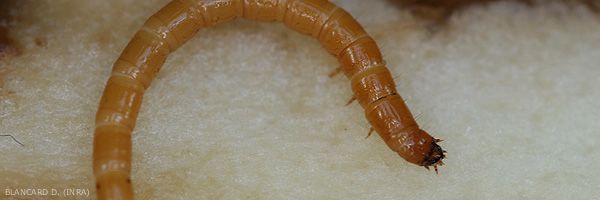
Soil pests
The most common soil pests are:
- the yellow worms or wireworms (Agriotes spp.), which gradually empty the stem by colonising it (figure 1). These insects are very common;
- cutworms, caterpillars of various moths (Agrotis spp ...) that perforate, eat and cut the stem at the soil level are also very frequently observed. They are often present in the soil around plants (figure 2);
- white worms (larvae of chafer, Melolontha melolontha) that eat the roots (figure 3). These pests are less common.
Occasionally, other pests may occur, such as Korscheltellus lupulinus (hepiali), which eats the stems and roots; Forficula auricularia (or earwig ) that cut the leaves in a half-moon shape, Deroceras reticulatum (small grey slug) and other slugs (figure 4) that eat the leaves and stems, and finally different species of mole cricket (Gryllotalpa gryllotalpa, figures 5 and 6, and Neocurtilla sp.) whose presence is characterised by raised and turned soil and damage on stems and leaves. This pest is rare.
To control some of these soil pests, growers often use insecticides. Unfortunately the number of active ingrediants currently available is very limited. Note that when lindane was still permitted, tobacco plants sometimes entering into contact with the product had narrower and distorted leaves (figure 5). This chemical injury was often momentary and affected only a few leaves.





